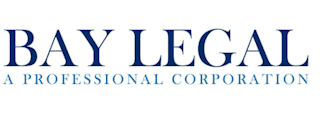College Affordability
As the cost of private colleges in the United States approaches a staggering $80,000 annually, it’s easy to succumb to the consensus view of a college affordability crisis. After all, this figure surpasses the median American household income. The narrative is grim, fueled by calls for free college education and a halt to escalating student loans. However, it’s crucial to unravel the tapestry of college costs to separate perception from reality.
The Various Types of Colleges and Their Costs
Three primary types of colleges exist in America: public, non-profit private, and for-profit private. Public colleges, as a rule, are less expensive. The average tuition fee for in-state students at a public college hovers around $10,000 compared to nearly $40,000 for private institutions. Notably, 77% of college students, equating to around 12 million individuals, were enrolled in public colleges in 2021.
The Sticker Price vs. Net Price
To the casual observer, American public colleges appear pricier than their counterparts in wealthier nations. Yet, the advertised tuition—a sticker price—often vastly overstates the financial burden students actually bear. Private colleges, on average, discount tuition by over 50%. Many institutions with large endowments, like Princeton University, offer substantial tuition reductions. Thus, after factoring in these discounts, some private colleges might be cheaper than their public counterparts.
The Flexibility of the American Education System
Additionally, America offers alternatives to traditional four-year degrees. For instance, students can attend community colleges, typically at lower costs, and later apply those credits toward a four-year degree. This flexible model is especially beneficial for working students.
Long-Term Benefits of College Education
The reality is, attending college generally pays off. College-educated men earn $587,400 more over their lifetime than high school graduates, and women earn $425,100 more. The potential long-term financial gains make college education a worthwhile investment for many.
The Perception of an Affordability Crisis
But where does the perception of an affordability crisis stem from? The answer lies in the confusing interplay between the sticker price and net price of college. The sticker price is rising, while net costs remain stable or even drop. However, the advertised, higher costs serve colleges’ interests by luring wealthier students who pay in full and associate higher costs with higher quality education.
The Intimidation of Large Tuition Bills
Yet, despite cost decreases and discounts, college can still feel unaffordable to many. Large lump-sum tuition bills can be intimidating. For those unable to pay upfront, loans seem to be the only way out. However, accrued interest can quickly spiral these loans into unmanageable burdens.
Not All College Benefits are Equal
Lastly, it’s crucial to note that the benefits of college vary considerably. For-profit colleges have been criticized for offering little value, especially to underprivileged and non-white students. Furthermore, some majors and occupations offer better returns than others. On average, though, college remains an affordable and beneficial endeavor, even if not all individuals reap equal benefits.
The Potential Game-Changer: Student Loan Forgiveness
Adding to this complexity is the aspect of student loans. Indeed, for those unable to pay tuition upfront, student loans have provided an answer, allowing access to higher education. However, the accrued interest on these loans can, over time, convert what was a manageable debt into a financial burden. The good news is that recent developments are aiming to address this issue.
One such development is the concept of student loan forgiveness, a policy that the government has been exploring in various forms. The concept behind loan forgiveness is straightforward: after a certain period of making consistent and timely payments, the remaining balance of a student loan could be wiped clean. This policy aims to relieve the long-term financial stress often associated with student loans. It’s a potential game-changer that could reshape the financial outlook for millions of college graduates.
Concluding Thoughts: A Complex Landscape
Ultimately, the landscape of college affordability is complex and multifaceted. It’s essential for prospective students and their families to carefully examine all aspects – from tuition costs and discounts, alternative college pathways, potential earnings, to the possibilities surrounding student loans and forgiveness. By considering all these elements, they can make an informed decision about higher education as an investment in a more prosperous future.
